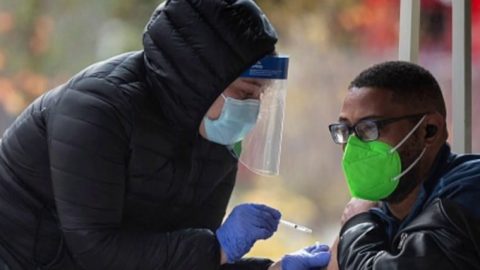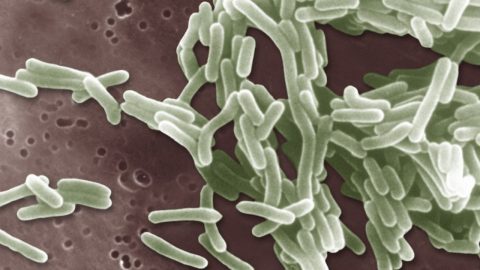Older adults who participated in the Supplemental Nutrition Assistance Program, or SNAP, had a slower rate of cognitive decline than people who were eligible for the anti-hunger program but didn’t receive benefits, according to a study presented Wednesday.
Although many adults begin to mentally slow down in midlife, researchers found that people over 50 who participated in SNAP, which helps people with low incomes afford groceries, had a 10% slower rate of decline in their memory and thinking skills compared with their peers.
That’s equal to gaining two to three additional years of cognitive health over 10 years, said Linlin Da, lead author of the study, who presented her findings Wednesday at the Alzheimer’s Association International Conference in Toronto.
By providing a secure source of food, SNAP “may have some underappreciated benefits for brain health,” said Da, who led the study while she was a doctoral student at the University of Georgia College of Public Health.
The National Institutes of Health-funded study comes just weeks after President Donald Trump signed legislation that the Congressional Budget Office estimates will cut funding for SNAP, formerly known as food stamps, by $186 billion through 2034. Food banks across the United States are already struggling to meet growing demand amid funding cuts from the Agriculture Department.
Food insecurity “can lead to poor nutrition and chronic disease, and all of that can negatively impact the brain,” Da said. “So by improving access to nutrient-rich foods, SNAP may support brain health, reduce the stress and promote better health overall.”
The new study, which hasn’t yet been published in a peer-reviewed journal, leaves many questions unanswered.
Researchers didn’t measure which foods study participants consumed, so they don’t know if people receiving SNAP benefits had healthier diets.
But doctors know that high-sodium diets can raise blood pressure, one of the most important risk factors for dementia, said Dr. Mitchell Elkind, chief science officer for brain health and stroke at the American Heart Association.
The study also doesn’t explain how food security might benefit the brain, said Elkind, who wasn’t involved with the research. It’s possible that programs such as SNAP relieve the anxiety that people feel when they can’t afford their groceries or when they have to choose between paying for food or medication, giving them more mental bandwidth to focus on other issues. Chronic stress has been linked to a higher risk for dementia.
The design of the new study, which followed more than 2,300 older people for 10 years, can’t definitively prove that participating in SNAP protects brain health.
It’s possible that people who participated in SNAP were cognitively healthier before the study began, Da said. Enrolling in SNAP can be time-consuming and complicated, making it more difficult for people with cognitive problems to complete their applications.
Yet a growing field of research links nutrition, food security and dementia risk.
“Observational studies from around the world have shown us that food insecurity and poor cognitive health go together,” said Kriti Jain, a health administrator at the National Institute on Aging, part of the NIH, who wasn’t involved in the study. “More recent studies have shown us that food insecurity comes before cognitive health gets worse.”
Brain health is shaped by far more than genetics, Da said.
Cognitive aging “can also be shaped by policies, by the environment and by access to different resources,” she said. “That means we can do something to change it and improve it.”
Anti-hunger groups contend that cutting SNAP benefits will leave people hungry and less healthy. Research shows that poverty and food insecurity — a condition in which people lack a consistent source of nutritious food —are common risk factors for malnutrition among older adults.
“SNAP is both a lifeline for older adults and a critical public health tool,” said Crystal FitzSimons, president of the Food Research & Action Center, an advocacy group. “Participating in SNAP can mean extra years of cognitive health, helping older adults remain independent,” instead of moving into nursing homes.
The Republican-led House Agriculture Committee has said the funding reduction “restores SNAP to its original intent—promoting work, not welfare—while saving taxpayer dollars and investing in American agriculture.”
Food as medicine

Karen Forbes, 61, first participated in SNAP decades ago when she was a single mother of a young child. She reapplied for the program during the pandemic when her pet sitting customers stopped needing her.
Forbes, who lives outside Portland, Oregon, said SNAP has been especially important since she developed long Covid in 2022, which has left her with heavy fatigue, prevents her from working and has caused “brain fog” that resembles age-related cognitive decline. Forbes said she and her father, who is 82, “are going through a sort of Alzheimer’s thing together.”
Although Forbes said she used to talk “a million miles a minute,” she now often struggles to find the right word. If she tries to speak too quickly, “everything comes out jumbled and stupid.” After an 18-month wait, Forbes said she recently began receiving disability benefits from Social Security.
Because of SNAP, Forbes said, she doesn’t have to choose between buying groceries and paying her rent or electric bills. Her favorite part of SNAP is being able to afford fresh fruits and vegetables, she said. Oregon’s SNAP program provides “double benefits” for shopping at farmers markets, so people can buy twice as much fresh produce for the same amount of money. Forbes said she tries to follow a healthy diet in the hope of overcoming her illness.
“When you’re chronically ill, every little tiny thing you can do to improve your health makes all the difference in the world,” she said.
Food insecurity linked to dementia
Jain described food insecurity as “a severe and growing public health issue in America.”
In families with member over age 60, the prevalence of food insecurity has almost doubled in the past two decades. Twenty-three percent of such families faced chronic or recurring food insecurity from 2015 to 2019, according to a survey from the NIH published last year in JAMA Health Forum.
Another study published last year found that food insecurity doubled the risk of probable cognitive decline.
And a paper published in 2024 in the Journal of Nutrition found that adults with food insecurity and lower-quality diets had significantly steeper declines in cognitive scores during the study, conducted from 2012 to 2020. In that study, however, participating in SNAP wasn’t related to the rate of mental decline, suggesting that SNAP alone “may be insufficient to prevent negative cognitive effects of poor diet and limited access to nutritious foods.”
Unprecedented cutbacks
The Urban Institute, a nonprofit research organization that focuses on social and economic policy, estimates that funding cuts could lead 22.3 million families to lose some or all of their food benefits.
The 20% decrease in funding is “the largest cut to SNAP in history,” according to the Center on Budget and Policy Priorities, a nonpartisan think tank. The measure will also shift much of the program’s cost from the federal government to the states beginning in 2028, as well as expand work requirements for participants.
Seven in 10 of the 42 million people who participate in SNAP are older adults, people with disabilities and families with children.
The new study suggests “we need more research on the role of healthy diet and nutrition in brain health,” Elkind said. “In particular, it suggests that there should be more research in the area of food as medicine, meaning the provision of healthy food to people to see what the impact is on cognition, dementia risks and brain health.”









Recent Comments